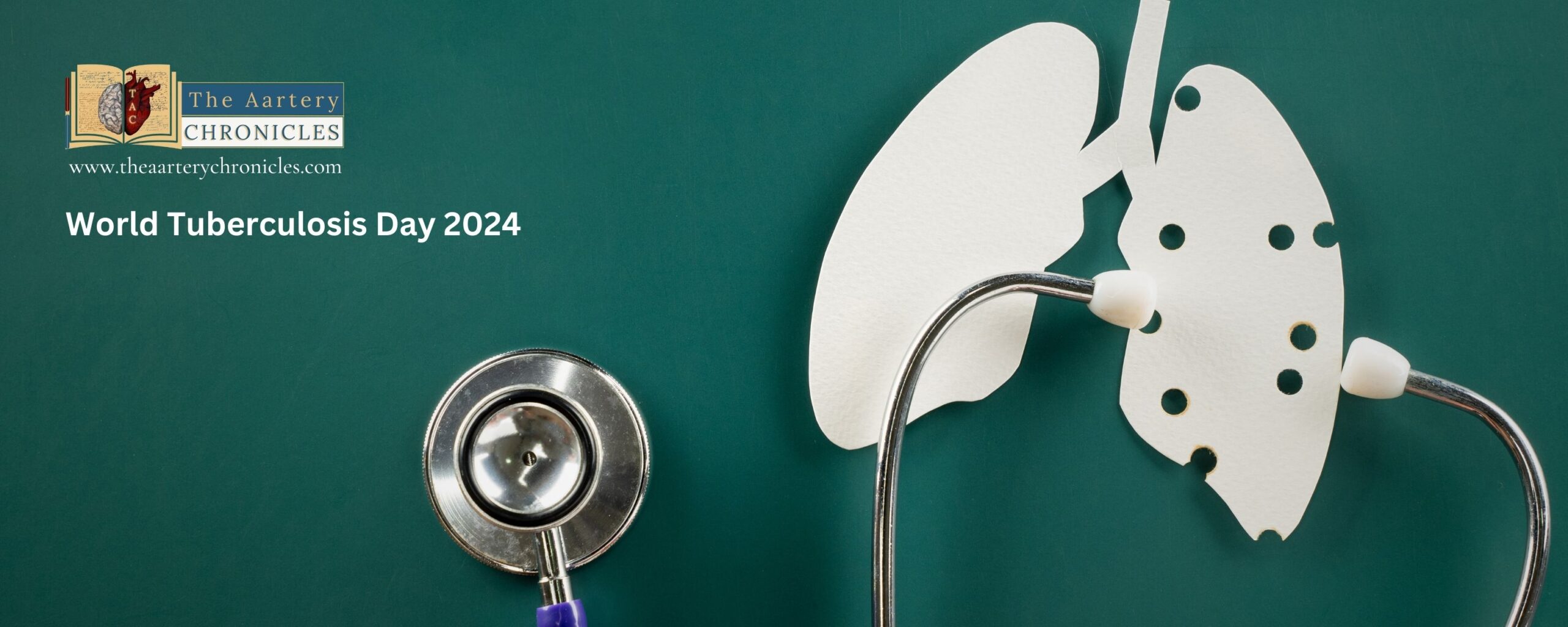

World Tuberculosis Day 2024: Uniting to Eradicate the Tuberculosis Epidemic
Explore the global efforts to eradicate tuberculosis on World Tuberculosis Day 2024, with a focus on India’s initiatives in combating this persistent health challenge.
Every year on March 24th, the global community comes together to observe World Tuberculosis Day, an occasion devoted to raising awareness about tuberculosis (TB) and the global initiatives aimed at eradicating this age-old ailment. This solemn occasion commemorates the groundbreaking discovery made in 1882 by Dr. Robert Koch, unveiling Mycobacterium tuberculosis as the causative agent behind tuberculosis (TB). [1]
Tuberculosis, often referred to as TB, has plagued humanity for millennia, claiming countless lives and leaving a trail of suffering in its wake. Despite substantial strides in combating TB, it remains a pressing global health challenge, particularly in developing countries with constrained resources and limited access to healthcare.
As we reflect on the progress made and the challenges that persist in combating this infectious disease, this article will delve into how World Tuberculosis Day serves as a rallying call for heightened awareness, renewed commitment, and concerted action to eliminate TB once and for all.
History and Significance of World Tuberculosis Day
The first recognized World Tuberculosis Day was observed in 1982, marking the centenary of Dr. Koch’s announcement.
Many people lack awareness regarding the treatability of tuberculosis, a condition that can linger undetected for long periods and is clouded by misconceptions and myths. World Tuberculosis Day aims to address this issue, given the significant risk faced by patients due to this lack of understanding.
World Tuberculosis Day holds immense significance in the global effort to combat tuberculosis. It serves as a crucial platform for raising awareness about TB, advocating for increased funding and resources, and mobilizing action to eliminate this preventable and curable disease. The day provides an opportunity to educate individuals about the importance of TB prevention, early detection, and treatment, as well as to challenge misconceptions and stigmas surrounding the disease. Additionally, World Tuberculosis Day encourages political commitment and collaboration among governments, healthcare organizations, civil society, and individuals impacted by TB. By shining a spotlight on TB and its impact on public health, World Tuberculosis Day plays a vital role in advancing the global agenda to end the TB epidemic and achieve the Sustainable Development Goals related to health and well-being.
The Theme of World Tuberculosis Day 2024
World Tuberculosis Day 2024, centred around the theme “Yes! We can end TB,” emphasises the united determination to combat tuberculosis. Through ongoing endeavours and advocacy, the objective remains steadfast: to eradicate this significant public health challenge worldwide. This theme inspires hope, highlighting that by joining together, enacting strong leadership commitments, enhancing investments, and embracing new WHO recommendations, we can effectively combat the TB epidemic. [2]
Understanding Tuberculosis
Tuberculosis (TB) is a communicable disease caused by the bacterium Mycobacterium tuberculosis. While it predominantly impacts the lungs, it can also affect various other organs, including the kidneys, spine, and brain. Despite being a curable and preventable disease, TB continues to claim around 1.4 million lives annually, making it one of the top 10 causes of death worldwide.
- Cause: Mycobacterium tuberculosis, the bacterium responsible for TB, is known to thrive in regions of the body abundant in blood and oxygen, predominantly targeting the lungs.
- Mode of Transmission: TB is transmitted through the infected air droplets when an infected individual coughs, sneezes, or speaks, making it highly contagious. Prolonged proximity to an infected individual heightens the likelihood of transmission.
- Risk factors: People with compromised immune systems, such as individuals with conditions like diabetes, chronic kidney diseases, cancer, or HIV/AIDS, are at higher risk of contracting TB. [3,4]
What are the Symptoms of Tuberculosis?
Tuberculosis (TB) infection can progress through three stages, with distinct symptoms present in each stage
1. Primary TB infection
During the primary infection stage, the immune system detects and captures the TB bacteria. While some bacteria may be eliminated, others may survive and multiply.
Symptoms: The majority of individuals do not exhibit symptoms during the primary infection phase of tuberculosis. However, some may experience flu-like symptoms, including a low-grade fever, fatigue, and coughing.
2. Latent TB infection
In this stage, the body’s immune cells form a protective barrier around lung tissue containing TB bacteria. Although the immune system keeps the bacteria under control, the bacteria remain alive.
Symptoms: There are typically no symptoms during a latent TB infection.
3. Active TB infection
Active TB disease occurs when the TB bacteria multiply and cause symptoms. It may either impact the lungs, which is known as pulmonary TB, or other areas of the body, which is termed as extrapulmonary TB.
Symptoms: Symptoms of active TB disease can vary but may include:
- Cough that persists for more than a fortnight (two weeks)
- Chest pain
- Coughing up blood or phlegm
- Fatigue and weakness
- Fever and chills
- Loss of appetite
- Night sweats
- Unintended weight loss
4. Extrapulmonary TB infection
Extrapulmonary tuberculosis refers to the spread of TB infection from the lungs to other organs or parts of the body.
Symptoms: Symptoms can differ depending on the specific area of the body affected. Common symptoms may include:
- Chills, fever, and night sweats
- Reduced appetite and weight loss
- Pain at the site of infection [3, 4]
The Status of Tuberculosis in India
In India, the prevalence of tuberculosis (TB) remains a significant concern, posing substantial challenges to public health. Let’s delve into some crucial facets of this burden:
Incidence and Mortality
- According to WHO estimates, India saw around 2.7 million new cases of TB in 2017.
- Over 400,000 people lost their lives due to TB in the same year.
- India contributes to approximately 27% of the estimated 10 million TB cases worldwide and 25% of the estimated 1.6 million TB-related deaths globally.
- In 2022, India reported 2.8 million (28.2 lacks) cases of TB, with a case fatality ratio of 12%.
- The estimated number of deaths in India from TB was approximately 342,000 (331,000 among HIV-negative individuals and 11,000 among those with HIV).
- The report underscores the ongoing public health challenge posed by multidrug-resistant TB (MDR-TB), with 110,000 cases recorded in India in 2022. [5, 6]
Initiatives Launched by the Government of India to Combat Tuberculosis
The Government of India has launched several initiatives to eradicate tuberculosis (TB). Some key initiatives include:
- National Tuberculosis Elimination Program: The National Tuberculosis Elimination Programme (NTEP), formerly known as the Revised National Tuberculosis Control Programme (RNTCP), aims to significantly decrease the burden of TB in India by 2025, which is five years earlier than the Sustainable Development Goals.
- Nikshay Poshan Yojana: This initiative provides nutritional support to TB patients to improve treatment outcomes. Under this scheme, eligible TB patients receive financial assistance for nutrition supplements during their treatment.
- The PM TB Bharat Mukt Abhiyan: The PMTB Abhiyan is a collaborative effort that unites various community stakeholders to assist TB patients and expedite India’s efforts towards TB elimination. It strives to engage a wide range of participants, including NGOs, private sector entities, and individuals. [7]
Combating Tuberculosis: A Multifaceted Approach
Combating tuberculosis (TB) requires a multifaceted approach that includes:
- Preventive measures: Implementing measures to prevent TB transmission, such as promoting infection control practices, ensuring access to clean air and ventilation in crowded settings, and addressing social determinants of health like poverty and malnutrition.
- Encouraging early immunization: Encouraging early immunization against TB aligns with the World Health Organization’s recommendation of administering a single dose of the BCG vaccine to newborns in countries with high TB prevalence shortly after birth. This vaccination offers protection against severe TB manifestations, such as TB meningitis.
- Early Detection: Enhancing efforts for early detection of TB cases through active case-finding strategies, expanding access to diagnostic tools like GeneXpert for rapid TB detection, and conducting targeted screening among high-risk populations.
- Addressing Drug Resistant TB: Strengthening efforts to address drug-resistant TB by improving laboratory capacity for drug susceptibility testing, providing access to second-line TB drugs, and implementing infection control measures to prevent the spread of drug-resistant strains.
- Collaboration and partnerships: Promoting collaboration and partnership among governments, healthcare providers, civil society organizations, and international agencies to pool resources, share best practices, and coordinate efforts for TB control and elimination.
- Policy and advocacy: Advocating for policy changes, increased funding, and political commitment to prioritize TB control efforts at national and global levels. Strengthening health systems and integrating TB services with other health programs can enhance TB control and improve overall health outcomes.
- World Tuberculosis Day - PAHO/WHO | Pan American Health Organization
- World TB Day 2024 Campaign: YES! WE CAN #ENDTB! (who.int)
- Tuberculosis: Causes, Symptoms, Diagnosis & Treatment (clevelandclinic.org)
- Tuberculosis - Symptoms & causes - Mayo Clinic
- India TB Report 2022 :: Central TB Division (tbcindia.gov.in)
- Self-reported tuberculosis in India: evidence from NFHS-4 | BMJ Global Health
- pdf (pib.gov.in)
- World TB Day | TB | CDC
- World TB Day (who.int)

Author: Dr. Anjali Singh
- Medicine and Diseases
- Nutrition and Diet
















